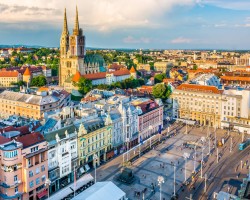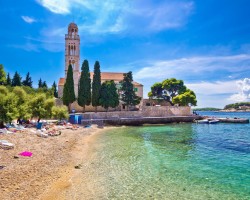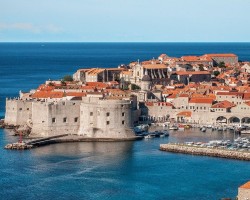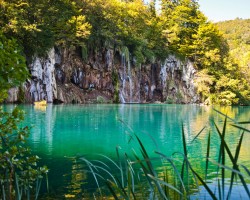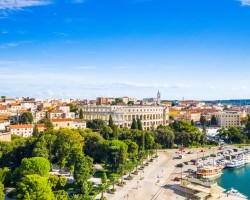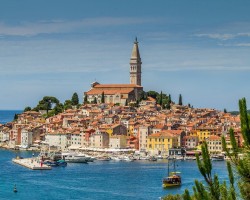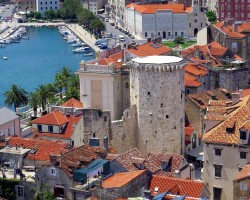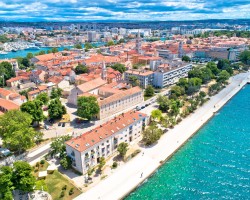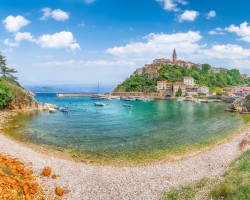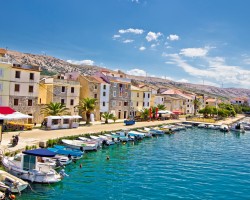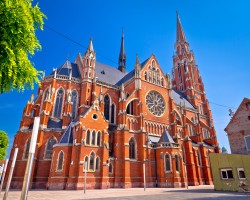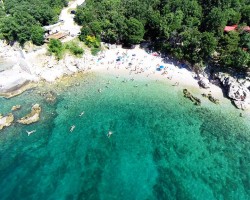Best time to go to Croatia for a perfect weather and where to go?
When is the best time to go to Croatia?
The best time to visit Croatia is between early May and late September. The sun is shining and the weather conditions are ideal during this period. It will allow you to fully enjoy the beautiful Adriatic coast, as well as to take memorable walks in the national parks.
The rest of the year, the sky is often blue and temperatures remain very pleasant along the coast. Traveling to Croatia in the middle of winter is therefore entirely possible: you can relax and admire the beautiful seaside resorts, such as Hvar, Split, or the island of Korčula, before heading to ski on the slopes of Sljem, near Zagreb.
When to visit Croatia based on your interests?
- For hiking on the trails, the ideal period is from May to September: you will be sure to have good weather. In addition, the altitude of the national parks makes the temperatures perfect for hiking, and even for trekking over several days. Don't hesitate!
- For diving, the best time is from May to October. The visibility is then ideal and the water temperature is like the Caribbean.
- For relaxing and sunbathing on the beach, the Croatian coast is perfect between June and late September.
- To avoid the crowds, which are very present during the school holidays in July and August, it is better to go to Croatia during the shoulder seasons. In spring, specifically during the period between mid-May and late June, you can enjoy the calm before the high season and pleasantly warm weather. The month of September is also a good time to visit Croatia. Most seaside resorts have emptied of their visitors, but the climate is still favorable for other activities.
Where and when to go based on the weather?
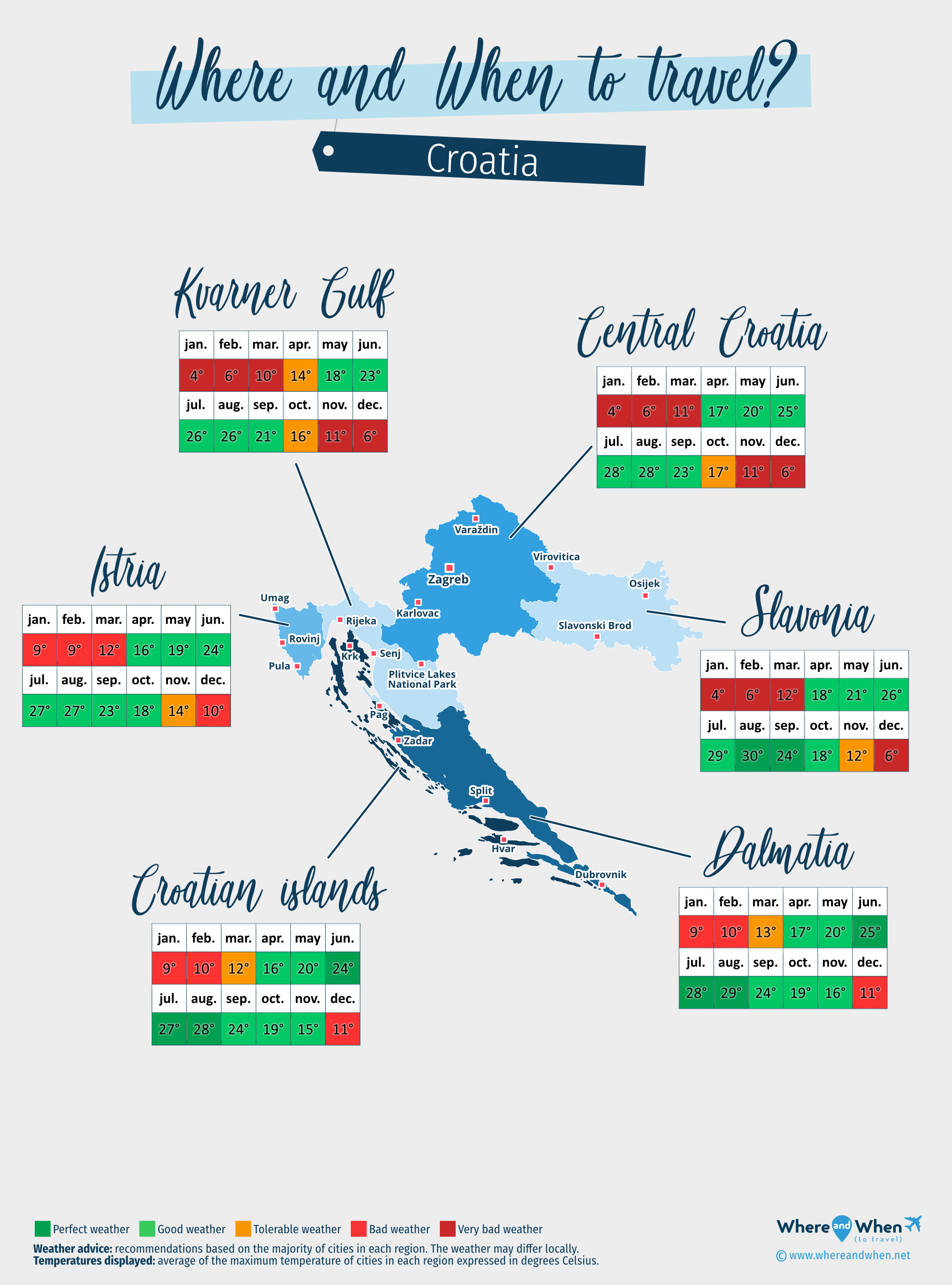
Central Croatia
Zagreb, Karlovac, Varaždin...
Croatian islands
Hvar island, Krk island, Pag island...
Dalmatia
Dubrovnik, Split, Zadar...
Istria
Pula, Rovinj, Umag...
Kvarner Gulf
Plitvice Lakes National Park, Rijeka, Senj...
Slavonia
Virovitica, Osijek, Slavonski Brod...
To get all the information about the climate and weather in Croatia for a specific month, click on the corresponding link below:
Croatia in january Croatia in february Croatia in march Croatia in april Croatia in may Croatia in june Croatia in july Croatia in august Croatia in september Croatia in october Croatia in november Croatia in december
Best time to travel to Croatia by cities
Climate and Weather in Croatia
Croatia is located in the heart of Europe, between Slovenia, Hungary, Serbia, and Bosnia and Herzegovina. The climate in Croatia experiences two distinct variations due to the country's elongated shape and its proximity to the Adriatic Sea:
- A continental climate in the interior of the country, with cold winters and hot summers.
- A Mediterranean climate along the Adriatic coast, with mild winters and hot, dry summers.
The weather in Croatia is also strongly influenced by winds, particularly the "bora" blowing from the northeast, and the "jugo" coming from the south.
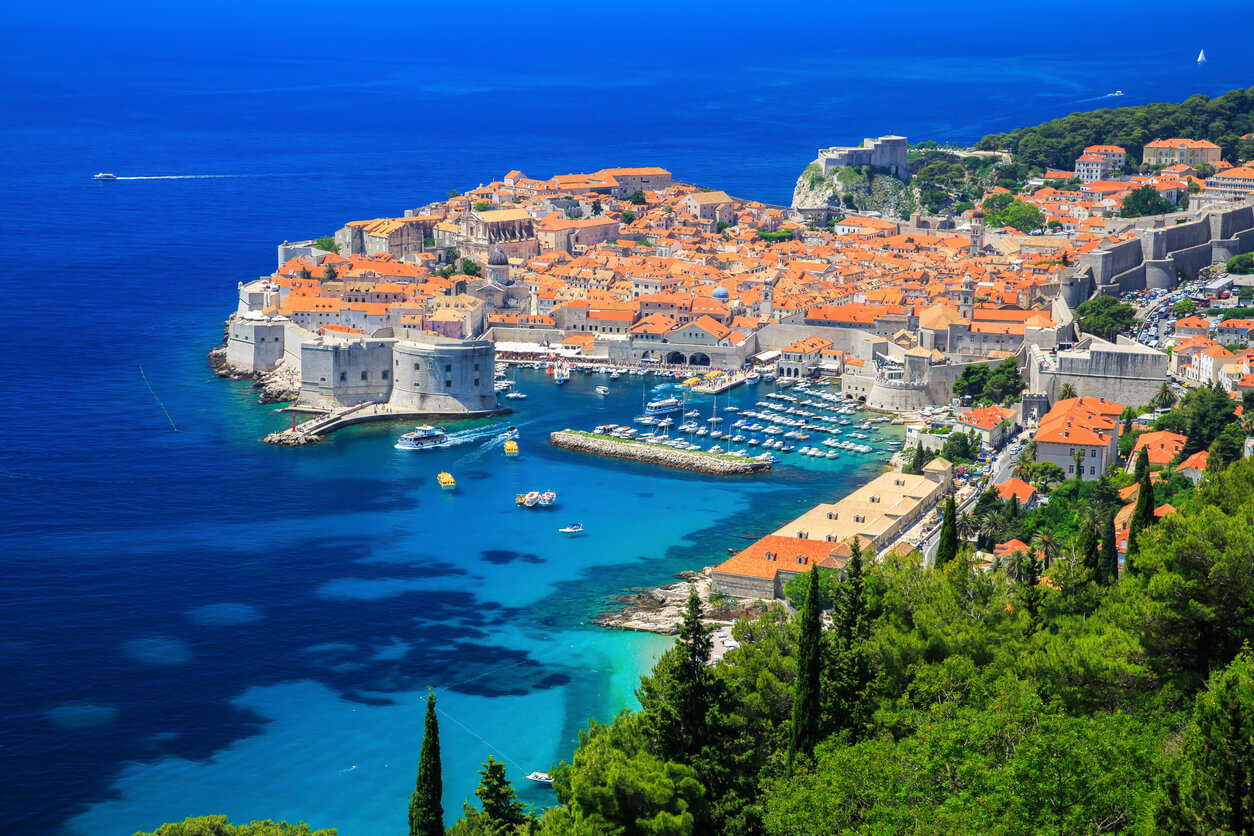
Climate in Croatia
Inland Croatia, in regions like Zagorje and Slavonia, experiences a moderate continental climate. In the mountains and high-altitude areas, one can even speak of an alpine climate.
The seasons are very distinct with:
- Very cold winters. It is not uncommon to see significant snowfall in the mountains, with temperatures dropping below 0°C (32°F) for several days. This makes it a paradise for winter sports enthusiasts! Moreover, the prices in Croatia are much lower than those in Western Europe. In the cities, however, it is less pleasant. In the capital city of Zagreb, daytime temperatures rarely exceed 5°C (41°F) in January, and temperatures drop below freezing at night.
- Hot summers, punctuated by violent thunderstorms, especially in the late afternoon. In the plains, temperatures rise quickly and the humidity makes the climate quite stifling. In contrast, in the mountains, the weather is perfect with very pleasant temperatures, ideal for hiking on the trails!
- Distinct intermediate seasons with a mild spring that can occasionally be rainy and a beautiful autumn, during which the colors of the trees make inland Croatia very photogenic. The only downside to this season: Zagreb is often shrouded in thick fog, and the sun struggles to break through.
Climate on the Croatian Coast
Unlike the harsh climate of the inland, the Adriatic coast enjoys a Mediterranean climate. Thus, the temperature variations throughout the year are less pronounced, as well as between day and night.
Here is what to expect during your trip:
- Winters are particularly mild, with temperatures rarely dropping below 5-6°C, even in the heart of the season. However, when the "bora" blows (the cold wind from the northeast), the atmosphere quickly cools down, especially on the islands. During this period, rain is not uncommon but does not last all day.
- Spring has pleasant temperatures, often ranging between 20°C (68°F) and 25°C (77°F) from early May to mid-June. Moreover, the air becomes drier, making it a favorable period to visit the country.
- Summers are hot and dry, with temperatures easily reaching around 35°C (95°F) in July and August. However, this period remains the most favorable to discover this part of Croatia, as the winds help alleviate the heat. It is during this season that the sea is most pleasant for swimming or practicing water sports, with temperatures around 25°C (77°F) in the Split region.
- Autumn is a good season to visit Croatia. Summer tourists have left, and the water and air temperatures remain pleasant. From the end of October, the region experiences heavy rainfall, so it is preferable to visit between September and the All Saints' Day holidays.
Temperatures and rainfall in Croatia
On these 3 graphs, we present the evolution of temperatures of Croatia and month-by-month rainfall for the cities of Zagreb, Hvar island, Dubrovnik, Plitvice Lakes National Park and Pula, as well as the month-by-month sea temperature for coastal cities.
Peak visitor numbers and tourist seasons in Croatia
Find out when Croatia has its high tourist season (the period when the influx of tourists is highest) and off-peak tourist season using our data and figures.
Tourist seasons in Croatia
The months with low numbers of tourists are: January, February, March, April, May, October, November and December. The number of visitors to Croatia is high in: June, July, August and September.
- Very low season in Croatia: January, February and March.
- Low season in Croatia: April, May, October, November and December.
- High season in Croatia: June and September.
- Peak season in Croatia: July and August.
Figure: Visitor index for Croatia month by month
Average price for flights to Croatia
A return flight between London and Dubrovnik is generally cheaper if you go in june ($ 157 on average): this is the best time for travellers on a tight budget. In contrast, you may end up paying $ 106 more for your airline ticket to Dubrovnik if you go in december.
Find the best price for your flight Flight prices to Croatia
Where to go in Croatia?
This table allows you to see the maximum temperature for each city and our opinion on the weather month by month (see colour legend below the table).
| Cities | jan. | feb. | mar. | apr. | may | jun. | jul. | aug. | sep. | oct. | nov. | dec. |
| Zagreb | 40°F | 43°F | 54°F | 65°F | 70°F | 79°F | 85°F | 85°F | 74°F | 63°F | 54°F | 43°F |
| Hvar island | 50°F | 52°F | 56°F | 61°F | 67°F | 76°F | 81°F | 81°F | 76°F | 67°F | 61°F | 54°F |
| Dubrovnik | 52°F | 54°F | 58°F | 63°F | 70°F | 77°F | 85°F | 86°F | 77°F | 70°F | 63°F | 54°F |
| Plitvice Lakes National Park | 40°F | 41°F | 50°F | 61°F | 68°F | 77°F | 81°F | 83°F | 72°F | 61°F | 52°F | 43°F |
| Pula | 50°F | 50°F | 56°F | 61°F | 68°F | 77°F | 83°F | 83°F | 76°F | 67°F | 59°F | 52°F |
| Rovinj | 49°F | 50°F | 54°F | 61°F | 68°F | 76°F | 81°F | 81°F | 76°F | 67°F | 59°F | 52°F |
| Split | 50°F | 52°F | 58°F | 63°F | 70°F | 79°F | 85°F | 86°F | 77°F | 68°F | 61°F | 54°F |
| Zadar | 50°F | 50°F | 56°F | 63°F | 70°F | 77°F | 83°F | 85°F | 77°F | 68°F | 61°F | 52°F |
| Krk island | 40°F | 41°F | 49°F | 58°F | 65°F | 74°F | 77°F | 77°F | 70°F | 61°F | 52°F | 43°F |
| Pag island | 41°F | 41°F | 50°F | 58°F | 65°F | 74°F | 79°F | 81°F | 70°F | 61°F | 52°F | 43°F |
| Karlovac | 41°F | 45°F | 54°F | 65°F | 70°F | 79°F | 85°F | 85°F | 74°F | 63°F | 54°F | 45°F |
| Osijek | 40°F | 45°F | 56°F | 65°F | 72°F | 79°F | 86°F | 88°F | 77°F | 65°F | 54°F | 43°F |
| Rijeka | 43°F | 45°F | 52°F | 59°F | 67°F | 76°F | 79°F | 81°F | 72°F | 61°F | 52°F | 45°F |
| Senj | 40°F | 41°F | 49°F | 58°F | 65°F | 74°F | 77°F | 77°F | 70°F | 61°F | 52°F | 43°F |
| Slavonski Brod | 41°F | 45°F | 56°F | 65°F | 72°F | 79°F | 86°F | 86°F | 77°F | 65°F | 56°F | 45°F |
| Umag | 49°F | 50°F | 54°F | 61°F | 68°F | 76°F | 81°F | 81°F | 76°F | 67°F | 59°F | 52°F |
| Varaždin | 40°F | 43°F | 52°F | 63°F | 68°F | 77°F | 83°F | 83°F | 74°F | 63°F | 52°F | 43°F |
| Virovitica | 40°F | 43°F | 52°F | 63°F | 68°F | 77°F | 83°F | 85°F | 74°F | 63°F | 52°F | 43°F |
| Brač | 50°F | 52°F | 56°F | 61°F | 67°F | 76°F | 81°F | 81°F | 76°F | 67°F | 61°F | 54°F |
| Cres island | 52°F | 52°F | 56°F | 61°F | 67°F | 76°F | 81°F | 81°F | 76°F | 68°F | 61°F | 56°F |
Legend:
perfect weather
good weather
tolerable weather
bad weather
very bad weather
About Croatia
What can I do in Croatia?
Beaches / swimming
Nature and countryside
Culture and heritage
Sports
Family travel
Crafts / shopping
Gastronomy
Nightlife
Is this weather information for Croatia reliable?
Climate data for Croatia has been gathered every day since January 2009. The analysis of these meteorological data for Croatia allows us to determine the average for each month in Zagreb, Hvar island, Dubrovnik, Plitvice Lakes National Park, Pula, Rovinj, Split, Zadar, and 97 other cities.
So yes: this data is reliable except in cases of temporary climate disruption in the region.

